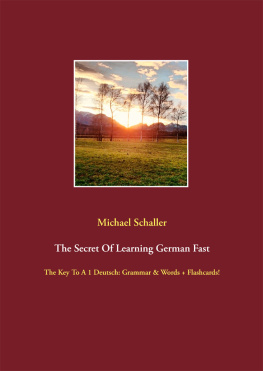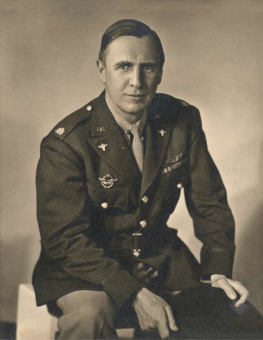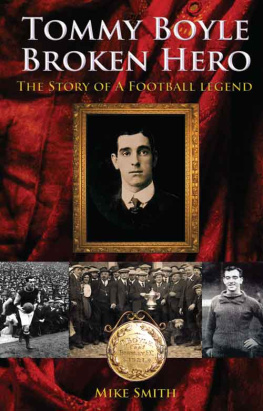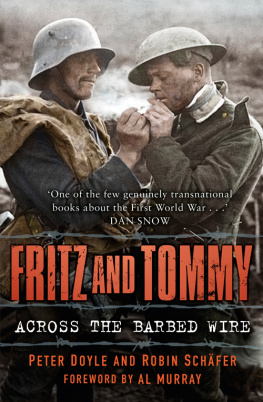God hath given you one face, and you make yourselves another.
William Shakespeare, Hamlet, Act 3 scene 1
First published in Great Britain in 2014 by
Pen & Sword Military
an imprint of
Pen & Sword Books Ltd
47 Church Street
Barnsley
South Yorkshire
S70 2AS
Copyright Ken Anderson 2014
HARDBACK ISBN: 978 1 78346 274 2
PDF ISBN: 978 1 47383 634 1
EPUB ISBN: 978 1 47383 458 3
PRC ISBN: 978 1 47383 546 7
The right of Ken Anderson to be identified as the Author of this
Work has been asserted by him in accordance with the Copyright,
Designs and Patents Act 1988.
A CIP catalogue record for this book is available from the British
Library
All rights reserved. No part of this book may be reproduced or
transmitted in any form or by any means, electronic or mechanical
including photocopying, recording or by any information storage
and retrieval system, without permission from the Publisher in
writing.
Typeset in Ehrhardt by
Mac Style, Driffield, East Yorkshire
Printed and bound in the UK by CPI Group (UK) Ltd, Croydon,
CRO 4YY
Pen & Sword Books Ltd incorporates the imprints of Pen & Sword
Archaeology, Atlas, Aviation, Battleground, Discovery, Family
History, History, Maritime, Military, Naval, Politics, Railways,
Select, Transport, True Crime, and Fiction, Frontline Books, Leo
Cooper, Praetorian Press, Seaforth Publishing and Wharncliffe.
For a complete list of Pen & Sword titles please contact
PEN & SWORD BOOKS LIMITED
47 Church Street, Barnsley, South Yorkshire, S70 2AS, England
E-mail:
Website: www.pen-and-sword.co.uk
Contents
Acknowledgements
M y thanks must first go to Linne Matthews for her competent and conscientious editing of the final manuscript. Further thanks to Carl Harrison-Ford for his constructive critique of an earlier draft; to Peter and Lydia Anderson for their critical help during the work in progress; to fellow author Michael Foley for his encouragement and generosity; to Jonathan Wright, Lisa Hooson and others at Pen and Sword who saw the storys potential; to researchers Chris Baker in the United Kingdom and Jeanette Finlayson in Toowoomba, Queensland; and to staff at various libraries and records offices in Australia and Britain who willingly responded to my often complex inquiries. I also acknowledge the help of relatives of the gallant men mentioned herein, including relatives of Walter Schwarz (alias Lieutenant Walter Lancelot Merritt MC and Bar), Joyce Hampson and Mrs Betty Bradley, members of Senator Mattners family, including Margaret Crisp, Barbara Hughes, Katherine Daniell and Charles Mattner, and Mrs Mary Thiele, daughter-in-law of Herbert Thiele, one of the three young brothers who were First World War volunteers. Finally, a thank you to my wife, Jacqueline, who had to put up with my occasional outbursts of frustration brought on by the creation of A German Tommy.
Preliminary Notes
Q uotes attributed to Walter Schwarz are taken throughout from his petition to King George V unless otherwise stated. Some accounts show his name as Schwartz and/or the middle name as Lesley. Throughout I use the name shown on his birth certificate: Walter Leslie Schwarz.
It has been impossible to determine if any copyright is attached to some of the illustrations in this book. Any infringement of copyright as a result of their publication is entirely unintentional; if any copyright has been infringed, the author extends his apologies to the parties concerned.
Introduction
T he date: 14 October 1918, a foggy early morning, east of Ledeghem, Belgium. Young British Army officer Lieutenant Walter Lancelot Merritt carries a large red flag to indicate the centre of a brigade-strength advance. He moves ahead of the main force. Close to the German lines a bullet smashes into his right leg. Despite the crippling wound he continues to hold the flag aloft, ensuring following troops maintain the line as they move on to take long-entrenched German territory. Merritts courage and leadership resulted in the award of a Bar to his Military Cross.
While undergoing treatment in post-war England, he confessed in a petition to King George his real name was Walter Schwarz. He had deserted from the Australian Imperial Force (AIF) in 1915 because he feared his German ancestry would prevent him being sent into battle. Within days he had joined a high-profile unit, the Sportsmans Battalion, under his assumed name and claiming to be the son of an Englishman. Records show these and other false claims in his official service records were accepted without question. George, who had personally decorated him as Merritt at Buckingham Palace, granted him a rare royal pardon, acting on advice from military and political advisers in Britain and Australia.
The mystery has remained to this day: how did Schwarz manage to maintain his cover for six long years under the most trying circumstances imaginable? Schwarzs only comment was he would like to say more but could not. He never did. Through research in Australia and Britain I have managed to go beyond what have been for nearly a century the officially accepted facts of this story to reveal for the first time the truth of this gallant deserters incredible adventure. Had he died on the battlefield, this story would have been concealed forever. My research has led me to conclude that members of a secret society helped him maintain his cover while advancing what he most wanted in life a long military career. This is a story of bravery and deception, unique in the history of war.
Other related chapters include the revelation that British soldiers of German ancestry, including decorated, wounded and long-serving men, were pulled out of the fighting and drafted into a non-combatants battalion. A contemporary British historian at first denied such a battalion had existed until shown the proof.
Ken Anderson, 2013
Chapter 1
A Deserving Class of People
C aptain Arthur Phillip and Augustus Theodore Alt were the first persons of German origin to set foot on Australian soil. Phillip landed at Sydney Cove on 26 January 1788 to found, and then govern, the British colony of New South Wales (NSW). The son of a language teacher who had migrated to Britain from Frankfurt, he was born in London in 1738 (died 1814). Alt (1731-1815) arrived with him as the first Surveyor-General of the colony. Born in England, he was the son of Justice Heinrich Alt, ambassador for Hesse-Kassel, and his English wife Jeanetta.
Germans were to become the first ethnic minority to form a cultural community in Australia. Picturesque villages dominated by churches grew up in the lands they settled. They established German-speaking schools and, despite their work ethic, found time to celebrate traditional festivals.
The newfound paradise these settlers described in letters home inspired others to seek their fortune in the distant land. Johannes Stein, who had landed in the country with little or nothing in the way of worldly possessions, by dint of hard work saved enough to buy a 100-acre (40-hectare) property and run it with a staff of farmhands and servants. Another first arrival, Englebert Hahn, a carpenter from Eltville, wrote home:
We work as human beings we eat no black bread, our bread is made from wheat and resembles cake what man of force and courage could hesitate between here and Germany? I would advise you to sell everything and come.
Come they did.
Between 1838 and 1839, George Angas, one of the founders of the South Australia Company, financially backed the passage of many Germans to the SA colony. They established market gardens and planted vines in what today is Australias distinctive German district, the Barossa Valley. A second wave of migrants arrived in South Australia following their countrys 1848 revolution. Mostly middle-class families, they included a large group of Catholics who settled to the north of the Barossa, in the Clare Valley, where their priests opened a college and established vineyards. In one of the largest post-revolution migrations, 300 Germans, mostly from the Rhine provinces, landed in Sydney, NSW.














